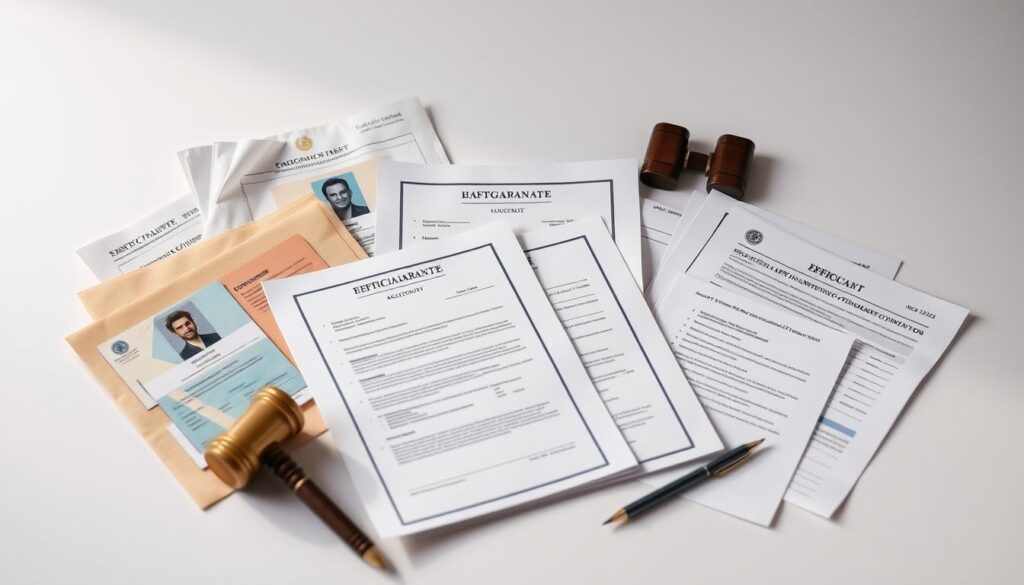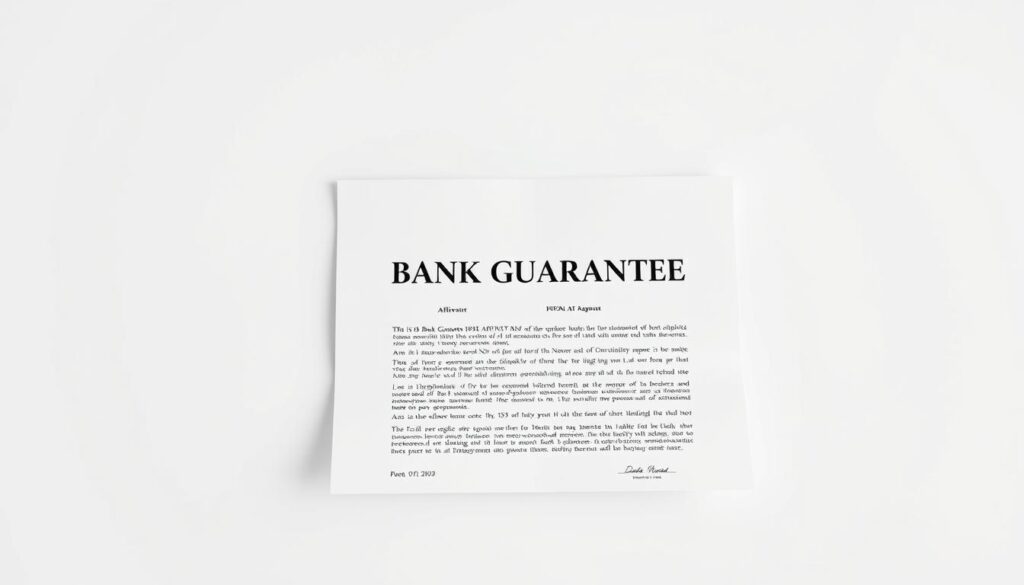Affidavit for Bank/Finance
Surprising fact: a recent review found that a large share of property and transaction rejections stem from affidavits that lack clear supporting records, not from missing notarisation alone.
You may believe a sworn statement will settle ownership questions. It rarely does by itself. A notarised affidavit cannot replace a title, deed or registration when banks and authorities check records.
Poorly drafted language, missing dates or vague descriptions often trigger disputes and delay a sale or transfer. You will see how an agreement-style affidavit should link to proof, such as proof of purchase or gift, and which details matter for tax, estate or company transactions.
What you will gain: clear guidance on which documents to attach, how to structure factual information, and which filing or court requirements you should ask about before submission.
Key Takeaways
- Notarisation is necessary, but not sufficient; always back the statement with records.
- Use precise dates, names and transaction details to reduce the risk of disputes.
- Attach proof of acquisition—purchase, gift or trust documents—when claiming ownership.
- Check bank, court and government filing requirements before you submit anything.
- Keep copies, receipts and acknowledgements after submission as evidence of compliance.
Understanding bank affidavits in legal proceedings and transactions
A sworn written statement serves to present facts but does not replace official title records. You should treat this document as a factual record, not as a deed, registration or court order.
What an affidavit is and is not
An affidavit is a signed, sworn statement made before an authorised official such as a notary public. It records first‑hand facts, dates and actions that you attest to under oath. The notary validates your oath; it does not validate the underlying ownership claim without supporting records.
Typical banking use-cases
- KYC corrections or name change requests where identity information must be clarified.
- Fraud or forgery disputes and credit-related cases where your statement explains the facts.
- Estate matters where banks often ask for an affidavit alongside probate or succession documents before allowing account access or transfers.
- Business account updates that may require a company resolution, trust deed extract or other corporate records in addition to the statement.
Be precise. Anchor your statement with dates, documents and records to reduce disputes and speed service. Always ask the bank which supporting documents they need so you do not face repeated requests.
User intent and how this guide helps you avoid costly errors
Before you draft any sworn statement, clarify the exact outcome you need from the lender or court. This guide helps you determine whether your statement will meet requirements on first submission and stop repeat requests or delays.
You will learn how common mistakes translate into practical steps. Follow a structure-first approach so your statement stays concise and factual. Pair facts with supporting records and documents ahead of a sale, transfer or any estate or business transaction.
What you gain:
- How to assemble information and records proactively for service workflows in India.
- Example-driven checks for property, gift and trust matters that reduce disputes.
- A mini-checklist for details, notarisation and the correct filing place.
- When to ask targeted questions of the lender or government office and when to seek attorney help.
Keep copies and proof of submission. That evidence often resolves later processing cases faster and protects owner rights during tax or court interest queries.
Assuming an affidavit replaces a title, deed, or official records
An ownership statement can support a claim, but it does not erase the need for formal title records. You must treat a sworn statement as supplemental evidence rather than the controlling record.
Real estate, vehicles, and business ownership: why records still rule
For real estate, a recorded deed remains the controlling record in a sale or mortgage. If the deed is missing, lenders and registrars will ask for more documentation.
Vehicle transfers hinge on RTO registration or title. In company disputes, registrar entries and corporate agreements typically outrank a single sworn statement.
How to pair your statement with supporting documents
- Attach purchase agreements, tax receipts or trust extracts when possible.
- Use court orders or certified sale documents if original records are absent.
- List prior transfers and chain of title to reduce disputes over rights.
- Prepare a record-attachment checklist so your submission meets service requirements the first time.
Missing critical information and asset details in your statement
Precise identifiers and a short acquisition history make your statement useful rather than confusing. Missing facts create delays, queries and further review. You must give clear, verifiable details so reviewers can match your claim with records.
Property descriptions, serial numbers, and account identifiers
List your full legal name, contact details and your capacity to sign. Include exact property details: Flat No., Survey No., PIN code for real estate, or VIN and chassis numbers for vehicles.
- Use bank-ready formatting for account numbers and asset IDs to avoid entry errors.
- Provide addresses, account identifiers and document references in one table or annexure.
Acquisition history: purchase, inheritance, or gift
State how the asset was acquired and add dates and supporting documents. Note purchases, gifts or inherited items and attach receipts, wills, trust extracts or sale agreements.
“Attach a short chain of custody when possible to pre‑empt questions about ownership rights.”
Finish with a clear annexures list and notarisation. Cross‑check names, spellings and numbers against original records to reduce disputes and processing problems.
Failing to notarise before a notary public or authorised witness
Notarisation is not a formality; it is the legal step that ties your oath to an identified person.
You must sign the statement in the presence of a notary public or an authorised witness. Without that, banks, courts and government offices may reject your document as invalid.
Prepare acceptable ID, check whether stamp paper or an e-stamp is required, and never let signing occur before notarisation. Avoid post-signing notarisation or missing notary fields; these errors can void the agreement.
Practical checks:
- Confirm the signatory is the person named and brings original ID.
- Ensure dates and place of execution match on every page and on annexures.
- Use wet-ink signatures when required and keep notary registration details and seal impressions.
- Ask the bank whether a magistrate or gazetted officer is acceptable in your case.
- Make two certified copies: one for you and one for submission.
| Requirement | Why it matters | Action |
|---|---|---|
| Notary presence | Authenticates oath and identity | Arrange appointment; bring ID |
| Stamp format | Local legal validity | Confirm e-stamp or stamp paper ahead |
| Annexures | Maintain document integrity | Reference and initial each page |
| Certified copies | Proof for bank or court | Get two certified sets |
Using hearsay, speculation, or biased language in sworn statements
Do not record rumours or opinions; your sworn statement must rest on personal knowledge. Keep sentences short and stick to verifiable facts such as dates, places and actions you witnessed.
Avoid quoting third parties unless you attach their sworn statement or an official record. If you must mention another person’s claim, note that it is second‑hand and provide a supporting document.
Use neutral, objective language. Emotive or accusatory words can undermine credibility and inflame disputes. A calm tone helps reviewers and courts focus on evidence, not rhetoric.
Structure each paragraph around one point and link it to a document. For example: “On 12 March 2023 I received a gift of the vehicle described in Annex A, and I enclose the sale receipt and registration copy.”
- Strip speculative phrases such as “I believe” or “it appears” unless followed by proof.
- Attach invoices, trust extracts or sale agreements for contested facts.
- Consider an attorney review where rights or allegations are sensitive.
“State only facts within your personal knowledge and reference the supporting records.”
Final check: ensure consistency across your statement and annexures. Clear, factual drafting reduces errors, speeds service and limits further questions from the service reviewer or court.
Not filing or submitting the affidavit to the right place
Filing an affidavit in the wrong office can silently stall your transaction and create costly delays. You must identify the exact authority that will accept and record your statement before you submit.
When public recording is needed:
- Real estate cases often require recording at the sub‑registrar or county office for the document to affect title or transfers.
- Probate or estate matters usually need the statement filed with the probate court alongside wills or trust documents.
- Corporate ownership statements should reference and match filings at the registrar of companies or the company secretary records.
Practical steps: ask the bank which branch or back‑office channel handles intake. Confirm whether a registrar entry or court filing is required before relying on the statement.
Aligning with company, trust and estate records
Ensure your statement does not contradict existing deeds, company resolutions or trust instruments. Misalignment creates disputes and may nullify your claims in service workflows.
“Always prepare a filing cover letter and an annexure list; clerks process complete submissions faster and errors drop sharply.”
| Scenario | Where to file | Key action |
|---|---|---|
| Property transfer | Sub‑registrar / land registry | Record affidavit; attach deed and sale receipts |
| Probate / estate | Probate court | File with will, estate inventory and probate application |
| Company ownership | Registrar of Companies / company records | Align statement with resolutions and update registry |
Final checklist: keep stamped acknowledgements and receipts, request reference numbers, and plan follow‑ups. These small steps prevent silent rejections and speed the transaction.
Poor organisation and unclear structure that weakens credibility

Clear layout and a defined purpose make an ownership statement credible and quick to review. Open with a short purpose statement and your capacity to sign. Follow with a brief background and then numbered facts.
Group facts by topic: identity, asset details, acquisition and supporting records. Use headings and an annexure index so reviewers can locate documents fast.
Avoid mixing argument and evidence. Keep legal submissions separate and place opinions in annexures or counsel notes. Consistent formatting of dates, names and account numbers reduces errors and queries.
Provide an example outline at the front: contents page, numbered facts, page numbers and initials on each page. This small step cuts disputes and speeds service.
“A concise structure shows objectivity and helps banks, courts and registrars verify ownership with less friction.”
Finish with a verification and signature block that matches notary requirements and lists annexures. That closing confirms authenticity and protects your rights in any subsequent case.
Overreaching claims about ownership or rights that you cannot prove
Do not claim rights you cannot prove with official records; overreaching weakens your position and invites challenge.
Your statement should mirror what the records show. Limit assertions to what you can substantiate with deeds, registry extracts, company filings or tax receipts. Avoid sweeping language that implies control where none exists.
Use clear phrasing that points to annexed evidence. For example: “I received the property described in Annex A and enclose the sale deed and tax receipt.” This shows evidence is attached rather than assumed.
Overstated rights raise disputes with sellers, owners or government offices and undermine the agreement you seek to support. If third‑party rights are affected, consider consulting an attorney before filing.
Practical checks:
- Match claimed title with registry extracts or certified deeds.
- Attach company records for share claims and trust documents for trust assets.
- Prepare answers for any gaps and propose how you will cure them.
Ignoring bank-specific requirements for name changes, disputes, or transfers
Before you prepare any supporting statement, check the lender’s exact form and checklist for name changes and disputes. Many branches maintain distinct intake routes and will not accept generic paperwork.
Match your affidavit content with the bank’s KYC list. Attach identity documents, proof of address and the prescribed form so the branch can update records without queries.
Credit disputes, forgery and fraud reports
Banks keep signature records and run formal fraud workflows. Use the lender’s dispute form and submit a supporting sworn statement only when requested.
- Confirm the exact intake form for name change or dispute resolution.
- Ensure account numbers, signatures and dates match bank records.
- Check whether internal transfers need board resolutions or partnership agreements.
- Keep copies and obtain an acknowledgement or reference number from the branch.
“Reconciling your details with the bank’s core system before submission prevents repeat visits and long delays.”
| Action | Why | Result |
|---|---|---|
| Use bank form | Meets processing rules | Faster acceptance |
| Attach KYC documents | Verifies identity | Reduces queries |
| Get acknowledgement | Proof of submission | Track service request |
Relying on generic templates without meeting local requirements
Generic forms may miss local execution rules, causing your submission to be returned or rejected.
Why that happens: many templates omit India‑specific clauses, witness blocks, stamp language and identifier fields such as PAN or Aadhaar. Missing items create procedural errors that trigger queries or formal refusal by courts and agencies.
Adapt any agreement example before use. Update the oath clause, the deponent’s details and the verification line so they match local practice. Remove boilerplate that conflicts with a bank form or a government filing.
Practical checks you can apply:
- Include correct notary or witness blocks and stamp wording.
- Reference PAN/Aadhaar where banking identifiers are required.
- Mark and cite each annexure inside the body for quick review.
- Confirm which branch, registrar or court will accept the document.
| Issue | Fix | Result |
|---|---|---|
| Missing identifiers | Add PAN/Aadhaar fields | Faster verification |
| Wrong witness block | Match local format | Avoid rejection |
| Unreferenced annexures | Number and cite them | Clearer evidence |
When in doubt, seek an attorney review for high‑value property, company or trust transactions. A quick legal check saves time and reduces disputes later.
Real estate and banking transactions where affidavits commonly fail

Missing, unrecorded or untraceable deeds create cascading problems for sellers, buyers and underwriters. You should not rely on a lone statement when registry entries are the controlling record.
Seller risks: if the deed cannot be produced, your sale may be delayed or the price weakened. A buyer’s solicitor and a lender will ask for certified copies or a court order before closing.
Buyer challenges: lenders and title companies often refuse financing without a clear title search. Tax receipts and a sale agreement help, but they rarely replace registered title for underwriting.
Title, lender and tax implications
Clean records protect lenders from future disputes and encumbrances. If chain-of-title gaps exist, consider these steps:
- obtain certified copies or rectified registry entries;
- seek a declaratory order when records cannot be cured;
- compile a thorough annexure pack with tax and purchase documents to support your claim.
| Issue | Immediate action | Result |
|---|---|---|
| Unrecorded deed | Secure certified copy or court remedy | Underwriting can proceed |
| Title gap | Provide chained agreements and receipts | Reduces lender queries |
| Tax mismatch | Align receipts with sale details | Clears tax-related objections |
“Document every detail and match annexures to the registry so lenders and title reviewers can verify ownership real fast.”
How to determine whether an affidavit is the right tool
Match your objective—clear title transfer, registry update or dispute resolution—with the instrument that law recognises. An affidavit can support an application, but it rarely substitutes for a recorded deed or formal agreement when ownership or transfer is at stake.
Use this quick guide to decide which path to follow:
- When a deed or agreement is required: property transfers, sale closings and registered gifts usually demand a signed, recorded deed or transfer agreement.
- When you need a court order or formal direction: title gaps, contested estate claims or unresolved company disputes often require a judicial remedy before banks or registrars act.
- When an affidavit helps: to corroborate facts, list annexed records and speed administrative checks—never as a replacement for registrable instruments.
“Use your sworn statement to corroborate records; choose agreements or deeds when the law requires registration.”
| Scenario | Right instrument | Why |
|---|---|---|
| Property sale or transfer | Registered deed / transfer agreement | Creates effect in title records and enables sale |
| Title gap or contested succession | Court order / decree | Settles competing claims and compels registry action |
| Name change or bank KYC update | Bank form + supporting statement | Administrative change; affidavit supports identity proof |
10 Most Common Bank Affidavit Mistakes to Avoid
Treat your sworn page as an evidence map: point each claim to a supporting document.
Overview: clear errors often repeat across cases — missing notarisation, vague asset descriptions, wrong filing office and attempts to replace a deed with a statement. Each error creates extra queries and delays.
Practical fixes and quick examples
- Notarisation: sign before an authorised witness and include notary details.
- Asset details: add VINs, survey numbers or flat identifiers and a short acquisition history.
- Filing route: confirm the correct registrar, branch or court before submission.
- Supporting agreements: attach sale deeds, tax receipts or company resolutions rather than relying on claims alone.
“Always attach documents that prove each factual sentence.”
| Issue | Why it fails | Quick fix |
|---|---|---|
| Missing notarisation | Document is treated as informal | Book notary, check seal and date |
| Vague asset details | Reviewers cannot match ownership | Include VIN, survey or account number |
| Wrong filing office | Submission stalls or is rejected | Confirm office and attach filing cover letter |
| No proof attached | Claims lack corroboration | Attach deed, receipt or certified copy |
Final tip: keep copies, courier receipts and acknowledgements. They form evidence of submission and reduce future disputes.
Practical checklist to keep your bank affidavit compliant today
Start with a short checklist that makes your sworn statement easy to verify at first glance. Keep the opening brief and factual so reviewers can match names and documents quickly.
Identity, contact details, and capacity to sign
Provide your full legal name, current address and a phone or email that matches bank records. State your capacity clearly (owner, nominee, power of attorney) and include any ID numbers required.
Supporting agreements, receipts, and records attached
List annexures in order: sale agreement, tax receipt, certified transfer or proof of gift, and any company or business resolutions. Cite each document in the body so an example reviewer can cross‑check quickly.
Filing route, acknowledgements, and retention
Confirm where you will submit: local branch, central team or registry. Sign before a notary public and ensure the notary fills all fields. Keep stamped acknowledgements, courier proofs and email confirmations.
“A clear cover sheet and indexed annexures cut queries and speed service.”
| Check | Why | Action |
|---|---|---|
| Identity match | Prevents delays | Verify name, PAN/Aadhaar and contact |
| Annexure list | Speeds review | Number and cite each document |
| Notarisation | Validates oath | Sign in front of notary; collect seal details |
| Filing proof | Evidence of submission | Keep receipts and reference numbers |
Indian context: what banks, government offices, and courts may require
A well‑prepared submission anticipates KYC checks, registry rules and probate formality so you avoid needless resubmission.
Property, tax, and registration considerations in transactions
What you should expect: some offices demand recording for property‑related statements and will ask for deeds, mutation entries or certified sale receipts.
Probate courts typically accept a sworn statement only with wills, inventories or succession papers. Lenders often treat your statement as supporting evidence in fraud or forgery disputes, not as primary proof of ownership.
- You will prepare bank KYC, name change and dispute packs in the format the branch requests.
- Include tax receipts, survey or flat identifiers and any mutation records that corroborate ownership.
- Attach certified copies of deeds or a relevant statute when local filing rules require it.
- Check whether your state expects extra attestations or a gazetted officer for execution.
“Align your annexures with the office that will receive them; official records remain the primary basis for decisions.”
Quick checklist: confirm format, list annexures, match identity details with KYC, and get acknowledgements when you submit.
Work with the right professionals for complex cases
When transactions involve missing deeds, contested rights or corporate filings, legal advice will speed resolution. Complex matters often require formal agreements, recorded deeds or a court direction rather than a standalone statement.
Who to call and when
When to consult a real estate attorney, company secretary, or probate lawyer
Red flags that justify expert help include contested ownership, gaps in chain of transfer, tax queries, or company register inconsistencies. Engage a specialist early to limit delays and reduce mistakes.
- Real estate attorney: title gaps, sale disputes and registry rectification.
- Company secretary: share transfers, corporate resolutions and filings.
- Probate lawyer: succession claims, wills and probate sequencing.
“Professional drafting aligns your statement with supporting agreements and filing requirements, cutting review cycles and dispute risk.”
| Need | Professional | Result |
|---|---|---|
| Unclear title or missing deed | Real estate attorney | Certified remedy or court route |
| Corporate ownership update | Company secretary | Registry-compliant filings |
| Contested succession | Probate lawyer | Clear court direction and filing plan |
Practical tips: plan sequencing of filings, budget for fees versus rejection risk, keep written instructions and communication logs, and ensure your statement integrates with deeds and corporate records.
Conclusion
Conclusion
Finish with a clear action plan: draft plainly, get the page notarised, and file where the authority or branch expects it. Keep a strong, clear trail of records and certified copies so reviewers can verify facts fast.
Rely on official documents rather than broad claims. Use the checklist here as an example for completeness. This reduces disputes and speeds service.
If issues touch tax, title or contested rights, consult an attorney early. Adapt templates to local execution rules and record every submission with acknowledgements.
Follow these steps and you will cut rework, protect your position and complete transactions with confidence.
FAQ
What is an affidavit and when should you use one in banking or property matters?
An affidavit is a sworn written statement of facts you make under oath. You use it to confirm facts—such as ownership, account history, or inheritance—when original records are unavailable or as part of KYC, dispute or estate processes. It does not replace deeds, titles or court orders where those documents are legally required.
Can an affidavit substitute for a title deed, registration or official record?
No. Courts, land registries and vehicle authorities generally require original titles or certified transfers. An affidavit can support a claim while you obtain or correct official records, but it rarely alone creates legal title or registration rights.
What details must you include so the statement is not rejected as vague?
Include full identity details, clear property or asset descriptions (address, plot number, serial numbers), dates of acquisition, payment receipts or agreements, and your relationship to the asset. Attach supporting documents and cite the precise transaction or event you are swearing about.
Is notarisation essential and how do you complete it correctly?
Yes. You must sign the affidavit in front of an authorised witness or notary public and have the notary stamp and date it. Follow local rules on witness counts, identification and whether an apostille or consular legalisation is needed for cross-border use.
Will hearsay or speculation in my sworn statement cause problems?
Yes. Only state facts you personally know or identify the source if you must rely on information from others. Speculation, opinions or unverified reports weaken credibility and may expose you to penalties for false statements.
Where should you file or submit the affidavit for banking, tax or court use?
Submit it to the institution or office that requested it: the bank branch, probate registry, land registration office or court. For company or trust matters, file with the company secretary or trustee records. Keep proof of submission and any acknowledgement.
What happens if you use a generic template without meeting local requirements?
Generic templates often miss jurisdictional formalities such as witnessing rules, prescribed wording or required attachments. That leads to rejection, delays or need for re-sworn statements. Use a template tailored to local law or get legal help.
How should you handle name changes, account corrections or KYC updates with an affidavit?
Provide certified identity documents, the official change instrument (marriage certificate, deed poll) and a clear affidavit explaining the change and linking old and new names. Follow the bank’s KYC checklist to avoid repeated requests.
When does an affidavit cross the line into overreaching claims about ownership?
An affidavit overreaches when you assert exclusive ownership or rights you cannot prove with records. Avoid asserting liens, transfers or title disputes without documentary proof. If the matter is contested, seek a court order or legal advice instead.
Who should you consult for complex disputes involving property, companies or estates?
Consult a solicitor specialising in property, a probate lawyer for estate matters, or a company secretary for corporate records. They help draft compliant affidavits, identify supporting documents and advise whether a deed, agreement or court application is required.
What supporting documents strengthen your sworn statement?
Attach purchase agreements, sale deeds, receipts, bank statements, tax receipts, registration records, trust deeds or certificates of incorporation. These documents substantiate your factual claims and reduce the risk of rejection.
How do you keep a clear, well-structured affidavit that courts and banks will trust?
Start with your identity and capacity, list facts in chronological order, reference attached exhibits, use plain language and sign before the notary. Number paragraphs and avoid ambiguous terms. A concise, organised affidavit reads as credible and professional.
Do taxation and registration considerations affect how you draft the statement in India?
Yes. Indian authorities often expect proof of tax payment, registered sale deeds and accurate property descriptions. For immovable property, include registration details and PAN when relevant. Verify requirements with the local sub-registrar or tax office.
How important is it to keep copies and proof after submission?
Very important. Retain the original affidavit, stamped acknowledgement, delivery receipts and digital scans. Proof of submission prevents disputes about filing and helps demonstrate compliance if issues arise later.
What are bank-specific affidavits used for, such as fraud or credit disputes?
Banks use affidavits to record claims of forgery, unauthorised transactions, or to support dispute forms. Follow the bank’s prescribed affidavit format, supply transaction details and attach police reports or forensic reports where requested.
Can an affidavit help when a deed or title is missing during a property sale?
It may help temporarily, for example to explain missing documents or declare continuous possession, but lenders and title insurers usually require formal title evidence. An affidavit does not remove the lender’s need for clear title for financing.
What common procedural errors cause needless delays?
Common errors include unsigned pages, missing witness signatures, absent exhibits, incorrect notary stamps, wrong jurisdiction wording and failure to submit to the correct office. Use a checklist and the bank’s guidance to avoid these faults.
When should you seek a court order instead of relying on an affidavit?
Seek a court order if ownership is disputed, a title transfer is contested, substantial assets are involved, or the other party rejects your affidavit. A court order provides binding authority where a sworn statement alone will not suffice.






